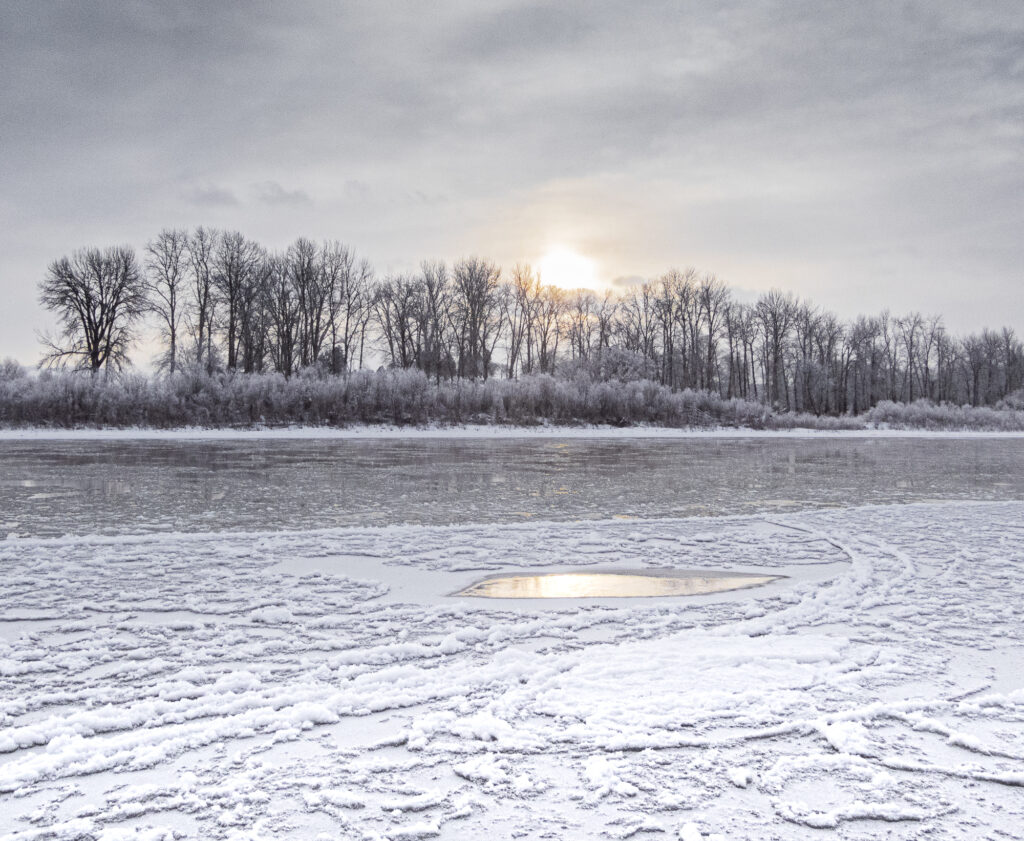
two degrees below zero
the dawn of a New Year–
breaks through

two degrees below zero
the dawn of a New Year–
breaks through
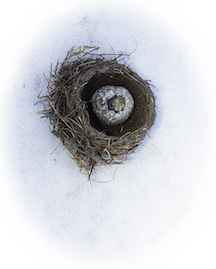
As the pandemic kept me close to home last year I had to forgo my usual distractions and activities. Not having my day broken up with meetings, errands, classes or socializing with friends opened up the day to sustained opportunities to read some of the dozens of unopened books that have piled up. And I made a very disturbing discovery. I couldn’t sit and read anything but the most page-turning mystery for more than 10 minutes without my mind wandering away from the page.
My concentration had been hijacked by the internet’s endless click bait. I realized how much of my time was taken up doom scrolling and “catching up” on social media. And that I was being prostituted by the big media companies, selling my personal information—my attention to their advertisers. For these and many other reasons I decided to delete my social media accounts.
It has had the benefit of shielding me from a lot of the ugliness, anger, despair and just plain silliness that went on during the election. But it also meant that I wasn’t able to get a daily dose of news from my friends and family.
Instead, it pushed me to be much more present in my own immediate world. And to get to know, on a daily basis what my avian neighbors were up to. I watched the snow geese on their migration through the spring. I kept up with what was happening in the heron rookery. I watched the drama of the osprey who returned only to find their nest occupied by Canadian Geese squatters who would not be evicted. Eventually the goslings fledged and the osprey managed to bring a single chick to adulthood. I frequently caught a glimpse of the sandhill cranes that nested in the field across the river parading around with a string of chicks trailing behind them. And I monitored two different red tail hawk nests, learning where the line was, when crossed, would send them into a protective screeching swoop.
But my favorite was the common Robin who nested in the aspen tree just outside my window. Every morning I could watch as she wove the nest into the branches twig by twig, then sat vigil for weeks, leaving only briefly to snatch a worm from my garden and return.
Then one morning she was gone and the nest quivered with a faint mewling and four tiny gold beaks gaped just above the lip. The mother robin’s weeks of sitting still, patiently waiting had abruptly ended with the hatching and she was back and forth, dozens of times a day trying to keep up with the plaintive cries from her chicks who soon crowded the small nest, jostling and pushing until it seemed they would burst it with their size.
Then one by one they fledged, first hopping from the nest edge to a nearby branch, fluffed their wings and glided/flopped to the ground where they made stuttering attempts at take-offs. The last one to leave the nest had to be coaxed by the mother who scolded from the branches relentlessly as the chick teetered on the edge, tentatively at last, taking that fateful leap into its new life.
I feel as if, through the long year past, I too have been sitting on my nest, waiting for some new way of life to hatch. I can feel the stirrings beneath me, ideas are chipping away at their shells, ready to break out into the world. When they do, will I have the stamina and determination to feed them and nurture them until they are ready to fly? We will have to see. This has been a strange and tragic year. But it has also given us the space and time for reflection and the chance to respond thoughtfully, rather than just react to how we want to live our “one wild and precious life.”
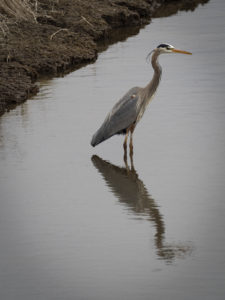
The stay at home order has been lifted, bars and restaurants opening up, retail and soon the farmer’s market, though all with restrictions. Life is slowly getting back to some form of “normal”. But I am not eager to get back into the flow of things, to end this quiet time of introspection and solitude. The first few weeks I could not focus on anything, kept scrolling social media, and the newsfeed. But I could not bear the way everything is flung out–anger and outrage and that terrible need to find someone to blame for what is happening. At first I felt the need to “stay informed” but then I realized it didn’t really matter if I knew what so-and-so said, how someone reacted–what I really needed was some perspective.
Finally, I learned to put down the phone, turn off the computer and stand still and listen. Taking me out of the human community encouraged me to connect to the natural community. I had the time and space to really feel spring awakening the woods, to go barefoot in the greening grass, to make a daily trip to the pond instead of to town, to listen to the gossip of the ducks and geese, the raucous chatter of the redwing blackbirds and flickers, to watch the drama of the osprey’s return and discovery of a goose in their nest. I looked forward to the daily visit of Woody the Woodpecker and his silly laugh. And was awed when a sharp shined hawk took down a dove just outside my kitchen window.
This has also been a time for reading–my favorite kind of reading–quiet, introspective books that encourage deep thought. Because that is what seems to be lacking in this crisis. Deep thought rather than instantaneous reaction. Reading writers like Wendell Berry. Scott Russell Sanders and Matthew Crawford’s The World Beyond Your Head: On Becoming an Individual in an Age of Distraction, gave me chance to put all of this into a social context. I could see someone’s deep, considered thought processes, analyzing a problem and understanding all the intricacies and issues that are involved, then filtering all of it through direct experience and feeling.
Of late I have returned to Gift From the Sea by Anne Morrow Lindbergh. Written more than 50 years ago, it has much to say about this time of isolation. It’s the story of her weeks alone at the beach and how the solitude and time out of time gave her the opportunity to reflect on all the different seasons and responsibilities of a woman’ life. Though times have changed, her deep insights and perspectives still have resonance. And near the end she echoes my fears for how I will respond as this stay-at-home order expires:
“When I go back will I be submerged again, not only by centrifugal activities, but by too many centripetal ones? Not only by distraction, but by too many opportunities? Not only by dull people but by too many interesting ones? The multiplicity of the world will crowd in on me again with its false sense of values. Values weighed in quantity, not quality, in speed, not stillness, in noise, not silence, in words, not in thoughts, in acquisitiveness, not beauty. How shall I resist the onslaught?”
How indeed.
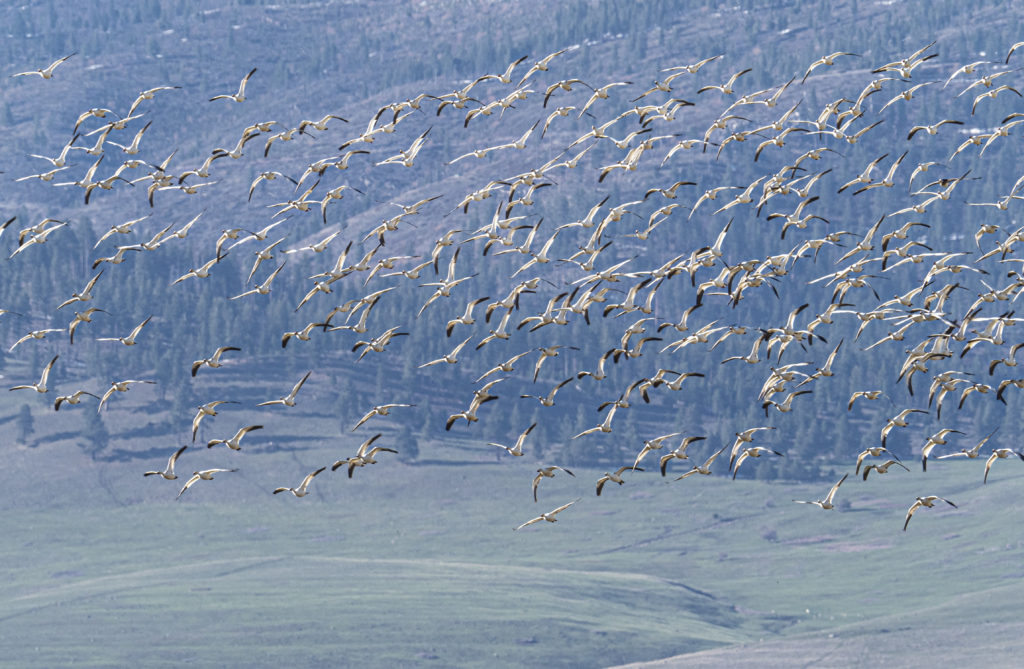
with spring’s arrival
unexpected snow flurries
swirling in blue skies
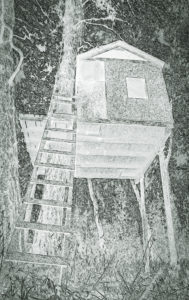
In 2018 Rebecca Solnit wrote a piece for Orion Magazine and foresaw this:”We are going to have to stay home a lot more in the future. For us that’s about giving things up. But the situation looks quite different from the other side of all our divides …From outer space, the privileged of this world must look like ants in an anthill that’s been stirred with a stick: everyone constantly rushing around in cars and planes for work and pleasure, for meetings, jobs, conferences, vacations, and more. This is bad for the planet, but it’s not so good for us either. Most of the people I know regard with bemusement or even chagrin the harried, scattered lives they lead. For the privileged, the pleasure of staying home means being reunited with, or finally getting to know, or finally settling down to make the beloved place that home can and should be, and it means getting out of the limbo of nowheres that transnational corporate products and their natural habitats — malls, chains, airports, asphalt wastelands — occupy. It means reclaiming home as a rhythmic, coherent kind of time. The word radical comes from the Latin word for root. Perhaps the most radical thing you can do in our time is to start turning over the soil, loosening it up for the crops to settle in, and then stay home to tend them.”
I read this back in 2018 and had forgotten about how much it resonated with what I was trying to build for myself here at home. But of course I’m one of the privileged. I think of the refuges in war-torn countries, families that have had to leave their homes because of gang violence, communities and cultures that have been uprooted by extractive industries that feed the privileged’s lifestyle. It’s time for all of us to reflect on what this enforced home sequestration has revealed to us about the ways we might change our attitude towards home, towards our lifestyles, what we really do need and ways we might take back our responsibility to change the impacts we have on the earth and on each other.
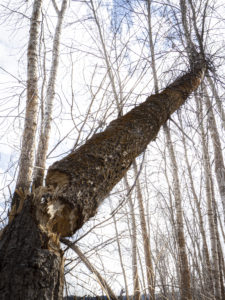
Franticly busy
gnawing away at our work
only to get hung up
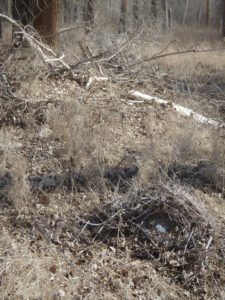
A wind storm ripped through the valley a few days ago and sometime between the midnight howling of the coyotes and the early morning trill and thrum of redwing blackbirds I heard the crack and whoosh of falling trees. The next day I found, stretched through the middle of the heron rookery a newly wind- felled cottonwood and there on the ground, the huge tangly branched nest with broken eggs, the blue shells still spattered with yellow yolk.


Over the last two weeks the herons have been returning to the rookery and are busy building and repairing nests, the old established couples reuniting and reclaiming their places, the young males hopefully proffering a particularly fine twig to perspective females. There is much flying about, loud grumblings and neck stretching threats when rivals fly too close to an already claimed nest space. One or another flies out to hunt the nearby field for emerging ground squirrels or fish from the ice cleared river. Meanwhile, back at the rookery long necks stretch and contort to preen feathers into place. Then a sudden cacophony as a red tail hawk flies through on a recon mission, razor sharp heron beaks clacking warnings at the interloper.
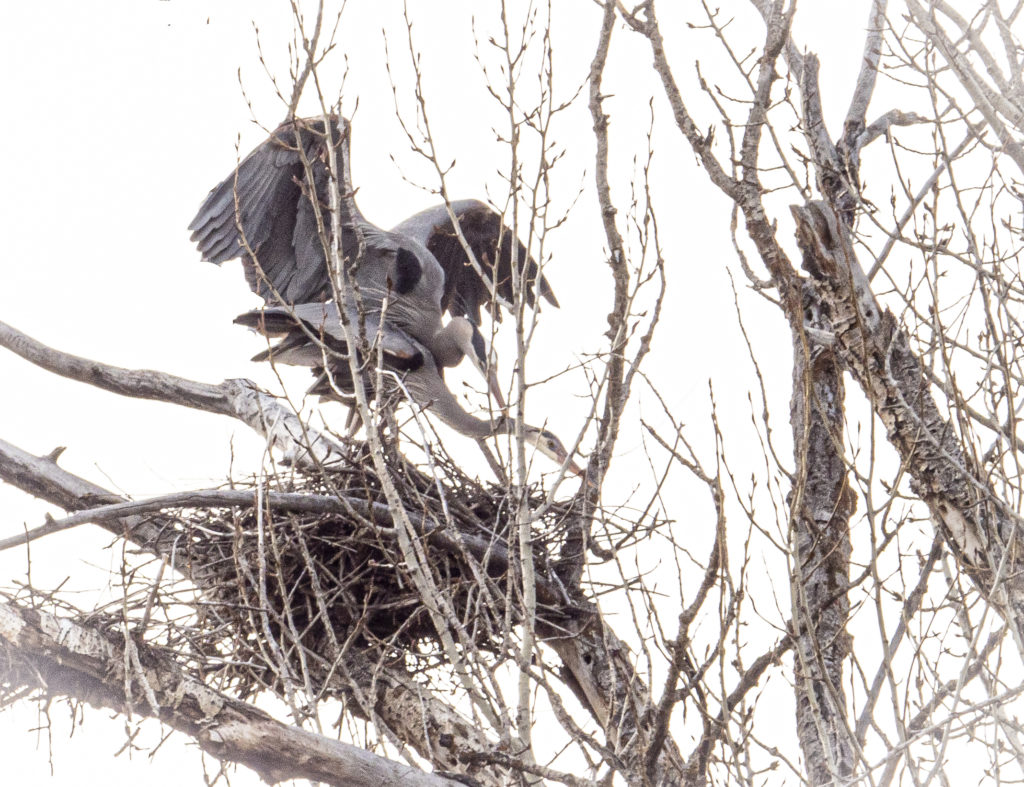
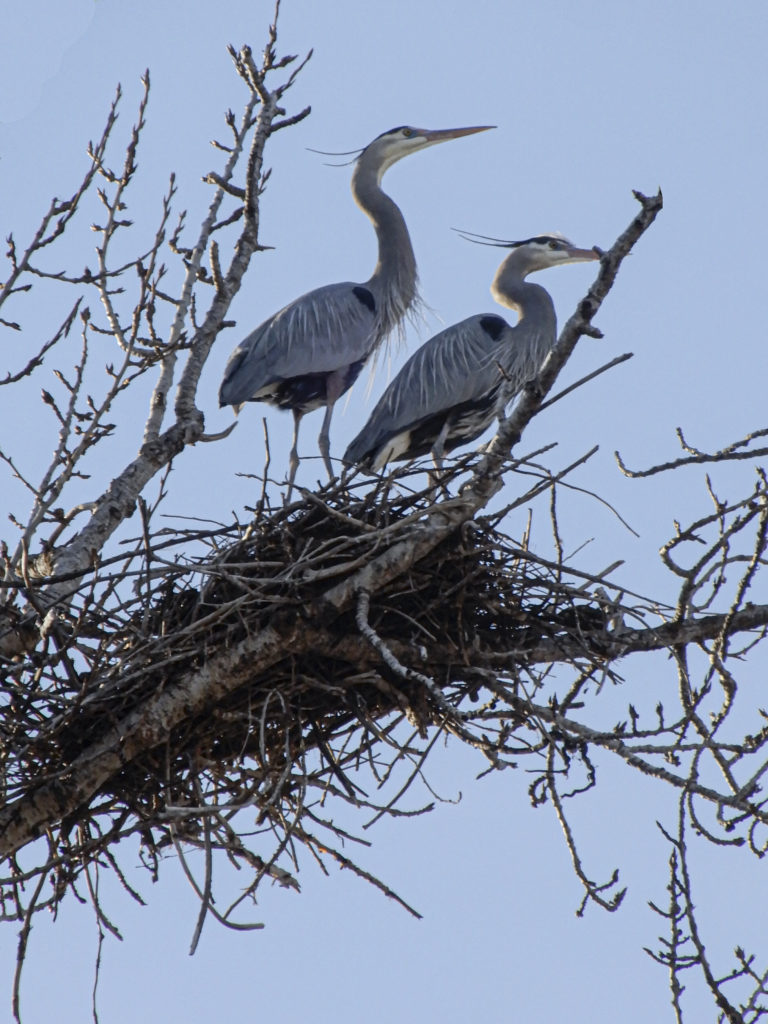
As the sun sinks lower more hunters return. A male settles onto a branch above a nest. The female stands and stretches her neck up to clack beaks. Loud gurgles and harsh cooing intensifies, wings flap and the male hovers over the female. The mating is quick, then both smooth their ruffled feathers, settle side by side into the nest and watch the darkening night sky.
The windstorm of the coronavirus pandemic has blown through our world, toppling all our well laid plans and breaking open our day to day lives. In other crises–fire, hurricane, earthquake or flood, even 9/11, we have rushed headlong into getting things “back to the way they were.” But this time we may not be able to get “back to the way things were.” And perhaps we shouldn’t even try., This crisis has really put the flaws in the way things are into sharp relief. I’m hoping, given the time we have now for reflection, that we can, as individuals, businesses and a country, use this hiatus to really do some soul searching and re-imagine different priorities and a different lifestyle. My mother talked about the depression and how that changed everything–made people more self-sufficient, more frugal, put the emphasis back on relationships and community and being more generous and empathetic to others, even when people had so little to share. She was horrified to see how our society changed in the prosperity that followed the war–how we became, not citizens, but consumers. How we stopped making do and being grateful for what we had, but became unhappy and dissatisfied always wanting more and more. And she was so disheartened when, on 9/11 the rallying cry was to go out and go shopping. I never really took her complaints seriously until now. I can see how so much of my life is consumed with consuming, and how, my generation feels so entitled.
The tree has fallen, our nest lies shattered on the ground. Let’s look to a different, stronger tree in which to rebuild and lay out our priorities.
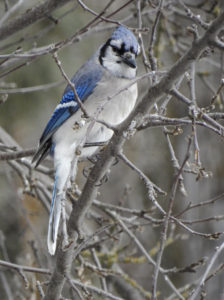
From my chair by the fire, where I sit reading, they call to me. Look up—they say. Take your nose out of that book and come to the window. It is the nasally call of a corvid, but higher and softer than the call of the ravens and crows that sometimes wake me in the morning, and less harsh than the Stellar’s Jays who come in flocks off and on in the winter.
There, flitting around in the branches of my apple tree are a trio of blue and white birds that, until this winter, I have never seen before. Blue Jays. Common in the east, they are new to Montana. The Montana Audubon newsletter says: “We can see an expansion in their range since the early 2,000’s.
It will be interesting to see what this means. Corvids, of which Blue Jays are a member, are “scatter hoarders.” They cache seeds across a landscape and those that aren’t eaten sprout. Here in Montana Clark’s Nutcrackers play an important role in maintaining our Ponderosa Forests. What role might the Blue Jays play in the future? Perhaps the Cornell lab site gives us a hint: “In the eastern US Blue Jays speed forest fire recovery by increasing their caching effort after fires and selecting canopy gaps as cache sites.” There is no doubt that western Montana could benefit from the presence of these birds in our ever more fiery summers.
“Tracking distribution patterns of species over time is extremely critical, since changes in bird occurrence can often be one of the first signals of widespread environmental or habitat changes.” If you’ve seen Blue Jays this winter, document them at https://ebird.org/mt/home.
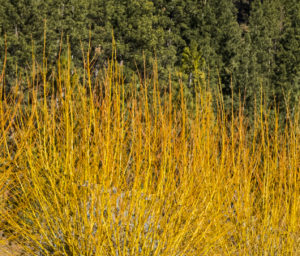
In one of Elizabeth Strout’s stories in Olive, Again a character remarks on the quality of February light. “What she would have written about was the light in February. How it changed the way the world looked. People complained about February; it was cold and snowy and oftentimes wet and damp, and people were ready for spring. But for Cindy the light of the month had always been like a secret, and it remained a secret even now. Because in February the days were really getting longer and you could see, if you really looked. You could see how at the end of each day the world seemed cracked open and the extra light made its way across the stark trees, and promised.”
The promise of spring is all around if you look carefully, past the grey days and the occasional flurry of snow. One day you will walk past the same bank of willows and suddenly they seem to glow golden with an inner light and the red osier dogwoods flame a blood scarlet. The great horned owls who began calling back and forth in the twilight last month are already nesting. And beavers, coyotes and foxes are all mating. As are the hairy and downy woodpeckers and flickers whose drumming fills the morning quiet. Even the hardy little chickadees are practicing their mating calls.
The ground is scattered with wind blown seeds already softening in the wet snow, just waiting to drop down into the dirt and germinate. Even beneath the ragged snowcover, in the subnivean layer, voles who torment you in the summer garden are reproducing. And as more sunlight filters through, plants have begun to grow. Newly hatched stoneflies are crawling over the snow and in their dens mother bears have already given birth.
The ancient Celts recognized the beginning of spring, on the first of February, the Cross Quarter, half way between the Solstice and the Equinox. To them it was Imbolc or Brighid. For me, this light of February is a bittersweet light. I am reluctant to see the end of winter. Every new snowfall now is a celebration, a chance to savor for a few more days the quiet, contemplative beauty of a winter’s day. But these last snowfalls are fleeting, giving way to the slush and blue skies of longer days and warmer weather and all around me are the reminders of the changing seasons
I
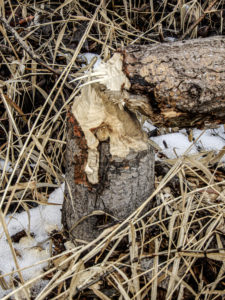
Walking through the nearly snow-bare backwoods, I follow a dried overflow channel that snakes its way through the forest, from pond to the main river. In high spring runoff this channel is full, but now it provides an easy access to the river bank. Deer have created a way through the willows and soon I’m standing on the rocky spit. The end of January and there is no ice–the days have been in the high 30’s and 40’s, the nights staying too warm to freeze.
It is hard to believe that 24 years ago, nearly to the day, an ice jam on the Blackfoot river caused the scouring of the mine and smelter tailings that had accumulated behind the Milltown dam for the preceding 88 years and their release into the Clark Fork River. This was the pivotal event that lead to the Superfund removal of the dam and the 6.6 million cubic yards of toxic sediment behind it.
1996 was also the year of the flood when record amounts of snow melted and sent the water spilling over the banks, not only filling the old channels, but creating a virtual lake of the backwoods. Across the river was a newly built expensive house, right on a bend where another overflow channel used to be. The flood ate away a goodly portion of their front yard. Afterwards they got permission from the county to build a bend-away weir in the river bed, forcing the flood waters away from their house and into the backwoods. Then, over the years they have piled up a long wall of rip-rap so that now it appears the house sits on the edge of a small rocky cliff.
The river has seen many engineered changes, from the dam to irrigation projects, levies in the downtown to riverfront development that tries to control the water and force it into a designated and constricted course. But rivers are capricious as well as powerful and the last couple of flood years have nearly destroyed a small neighborhood where the river has changed course and created a new channel.
Now another engineer has moved into the neighborhood and begun work on the river. As I make my way back through the willows to where a small stand of new cottonwoods have taken root, my way is block by several toppled trees. The ground is littered with wood chips and the trunks riddled with tooth marks, The lack of snow and ice this winter has meant an extended season for their work. These engineers, however are more than welcome.
A few months ago I read a wonderful new book by Ben Goldfarb–Eager: The Surprising, Secret Life of Beavers and Why They Matter. I then had the privilege of hearing him give a presentation at the Montana Natural History Center and I am now a confirmed “Beaver Believer.”
Goldfarb says, “Beavers are environmental Swiss Army knives, capable of tackling just about any ecological dilemma. Trying to slow down floods or filter out pollution? There’s a beaver for that. Hoping to capture more water for agriculture in the face of climate change? Add a beaver. Concerned about erosion, salmon runs, or wildfire? Take two beaver families, and check back in a year.” I can hardly wait to see what the beavers do to my short stretch of the river, and what they can teach me about engineering a future where, instead of dominating and trying to control nature, we humans can collaborate with other species to restore our natural ecosystems.